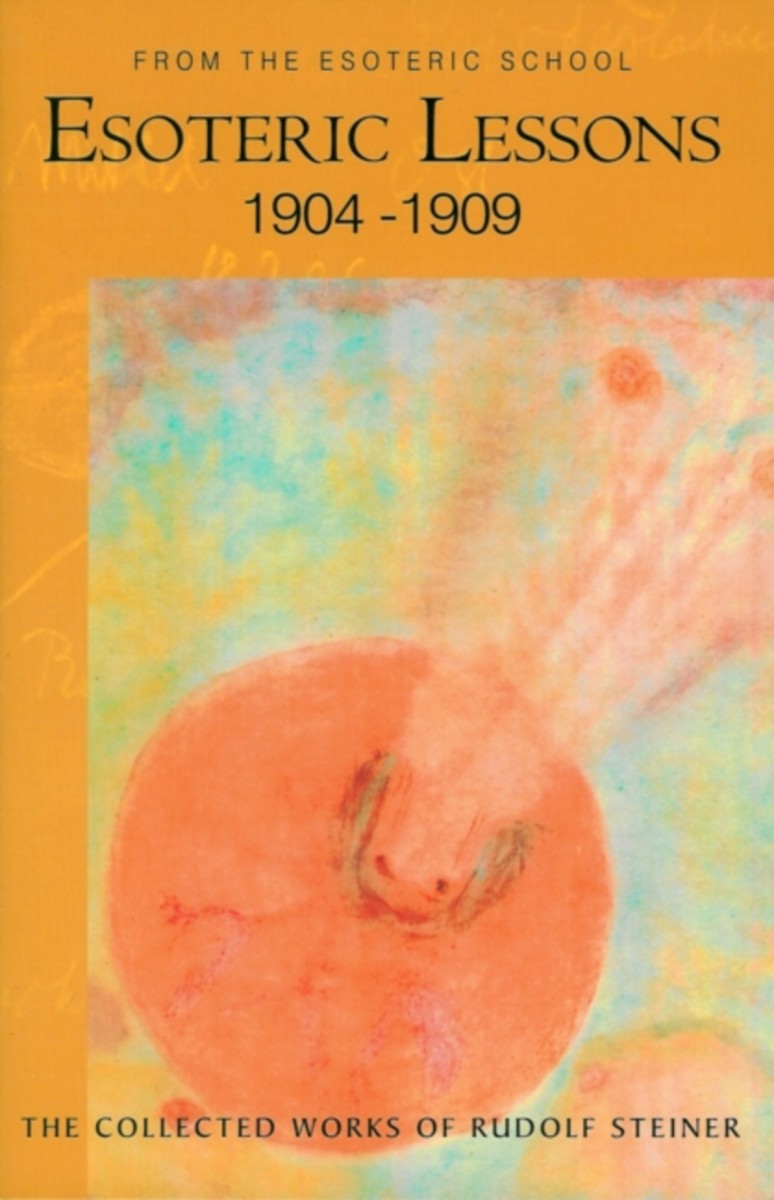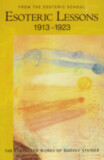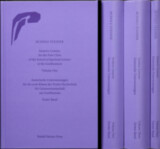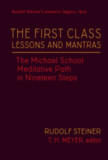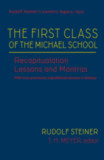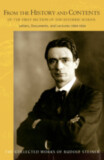Esoteric Lessons 1904–1909
From the Esoteric School 1 (CW 266/1)
Volume vol. 1 (CW 266/1) — From the Esoteric SchoolIntroduction by Christopher Bamford
Foreword by Carl Unger
Translated by James H. Hindes
- Publisher
SteinerBooks - Published
7th March 2007 - ISBN 9780880106108
- Language English
- Pages 592 pp.
Notes written from memory by the participants and meditation verses by Rudolf Steiner (CW 266/1)
“Rudolf Steiner constantly sought the right soil for certain presentations, and so it could happen that he communicated, as a trial, something from his spiritual research to quite a small circle, sometimes only to three, two, and even only one person. At the same time, he was experimenting to see how far modern consciousness could bear such matters. It was some new research that he presented in this way to a few people. One could ask questions and discuss things. But, after a while, one noticed that he took the same matter to a larger circle—that is, to the circle of people who formed an esoteric group. Then it would happen that he brought it before all the members of the Anthroposophical Society. Moreover, if one waited a little longer, he began to give public lectures on the same subject. Esotericism...had to be implanted step by step in present-day consciousness.” —Carl Unger (Oct. 29, 1928)
To read this book is to be part of Rudolf Steiner’s Esoteric School, to experience the growth and development of Anthroposophy from within. First and most essential here is the primacy of practice. Steiner stresses attention and concentration. We waste much of our time and energy on thoughts and feelings that to nowhere. Meditation—concentration on a living thought, an idea of higher origin—begins the process of self-gathering. Controlling our thoughts, we begin to form our “mental” (etheric) body; ordering our memories, we begin to work on our astral body. These two tasks are our preliminary goal. “We must make our life into a school for learning.” Humility is the key—when the world becomes our teacher, we must become humble.
With the beginning of these esoteric lessons, the path is deepened. We witness Rudolf Steiner the spiritual teacher in action. Throughout the lessons, Steiner moves between the so-called Christian–Gnostic path and the theosophical framework of the Masters. As the years unfold, however, the lessons move from the framework given by H. P. Blavatsky toward a deeper, more universal and, at the same time, more contemporary focus. Steiner reveals that behind what Blavatsky brought is the wisdom of Atlantis, which today must come to life again. Here, Christian Rosenkreutz, the Rosicrucians, and the “old philosophers” (alchemists) become important, for it was their task to bring this wisdom, now “enchristed,” into the West.
This volume is the English translation of «Aus den Inhalten der esoterischen Stunden, Gedächtnisaufzeichnungen von Teilnehmern. Band.1, 1904–1909» (GA 266/1).
C O N T E N T S:
Introduction by Christopher Bamford
German Editor’s Preface
Foreword: “Rudolf Steiner and the Nature of Esotericism” by Carl Unger
Part I: Lectures
Part II: Notes, Meditation, and Exercises
Part III: Notes of Esoteric Lessons, 1904–1909
Appendix:
Concerning Today’s Reform Movements
Methods of natural healing
Vegetarianism
Nourishment related to the temperaments
Notes
Index
Rudolf Steiner
Rudolf Steiner (b. Rudolf Joseph Lorenz Steiner, 1861–1925) was born in the small village of Kraljevec, Austro-Hungarian Empire (now in Croatia), where he grew up. As a young man, he lived in Weimar and Berlin, where he became a well-published scientific, literary, and philosophical scholar, known especially for his work with Goethe’s scientific writings. Steiner termed his spiritual philosophy anthroposophy, meaning “wisdom of the human being.” As an exceptionally developed seer, he based his work on direct knowledge and perception of spiritual dimensions. He initiated a modern, universal “spiritual science” that is accessible to anyone willing to exercise clear and unbiased thinking. From his spiritual investigations, Steiner provided suggestions for the renewal of numerous activities, including education (general and for special needs), agriculture, medicine, economics, architecture, science, philosophy, Christianity, and the arts. There are currently thousands of schools, clinics, farms, and initiatives in other fields that involve practical work based on the principles Steiner developed. His many published works feature his research into the spiritual nature of human beings, the evolution of the world and humanity, and methods for personal development. He wrote some thirty books and delivered more than six thousand lectures throughout much of Europe. In 1924, Steiner founded the General Anthroposophical Society, which today has branches around the world.


